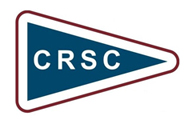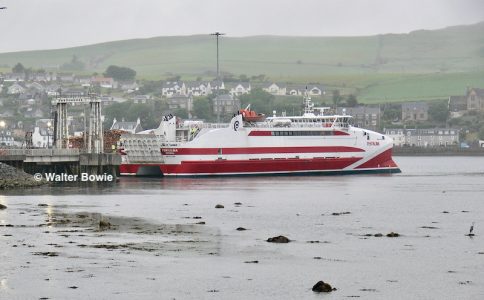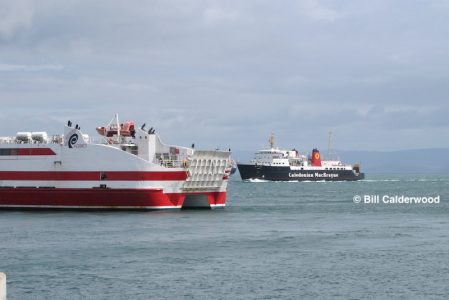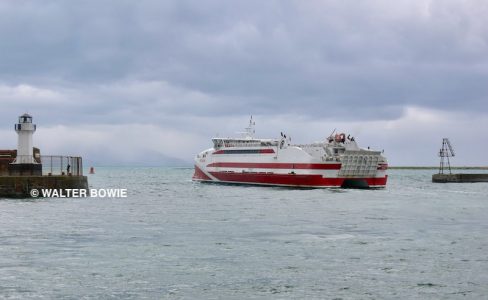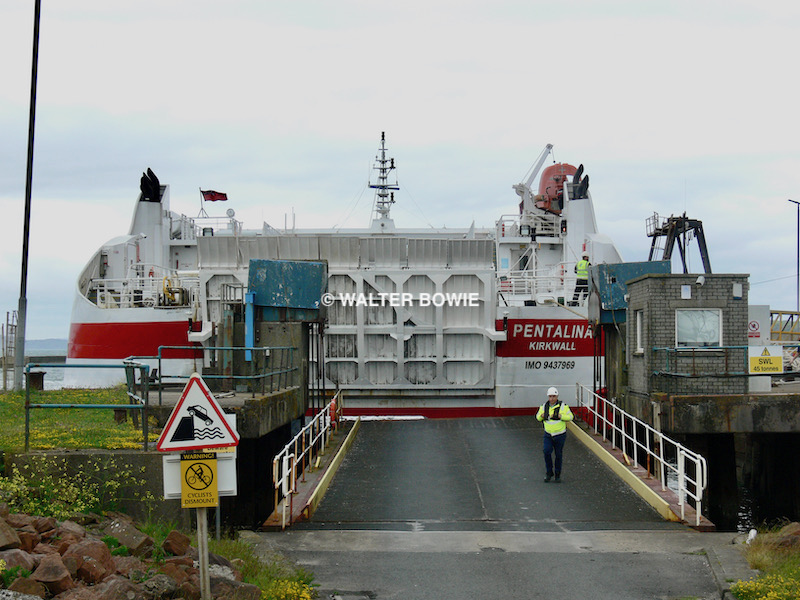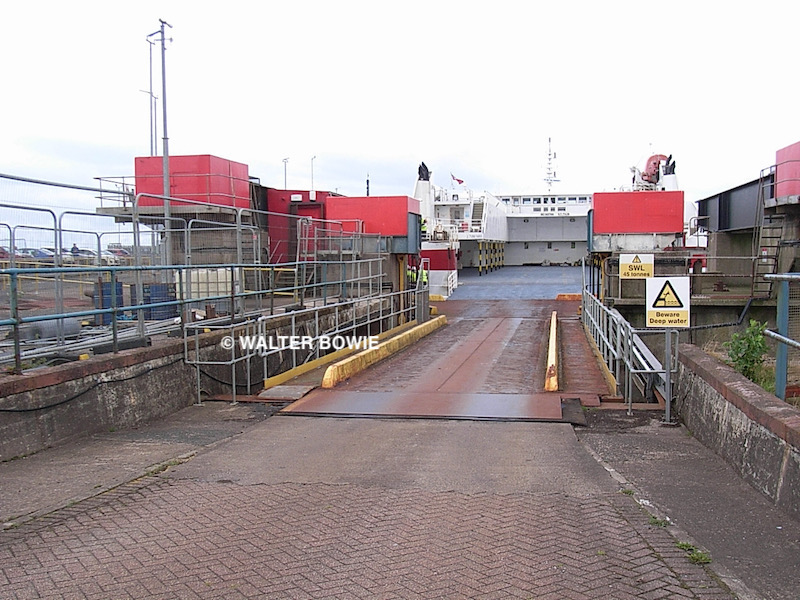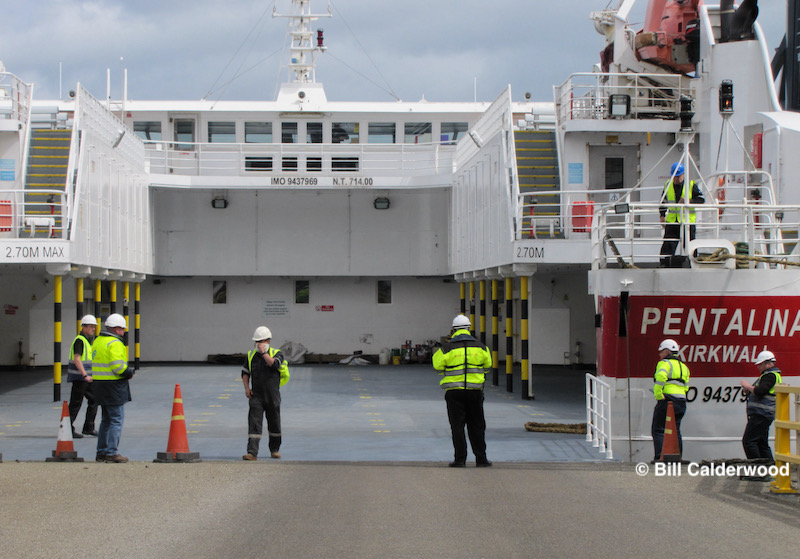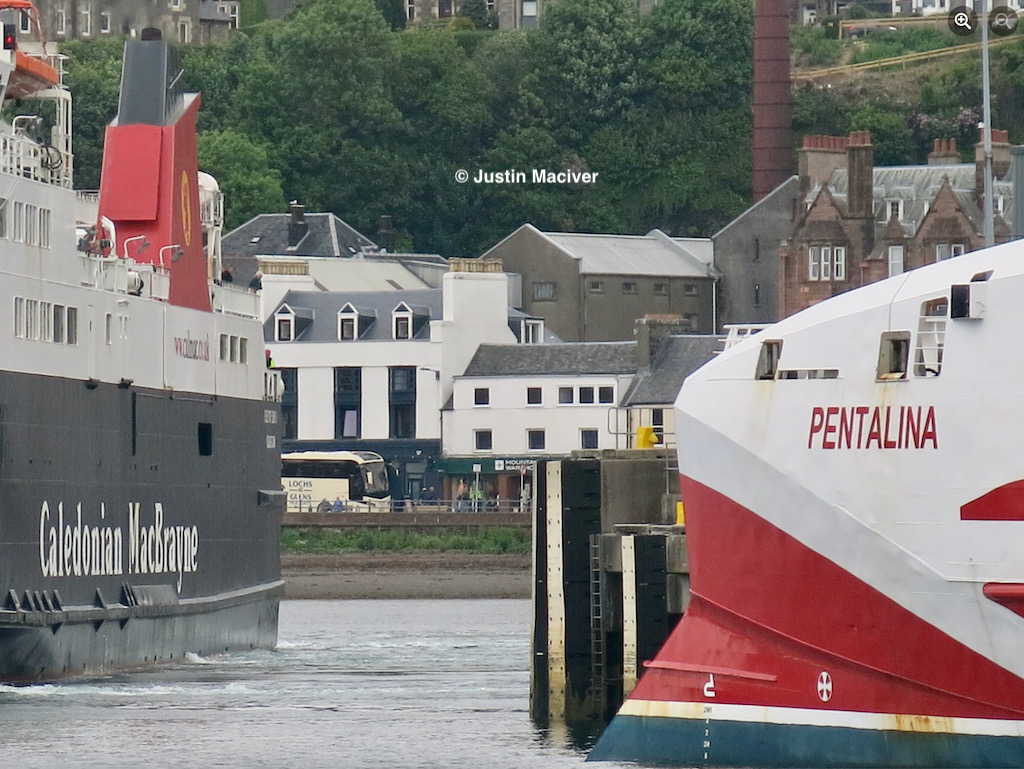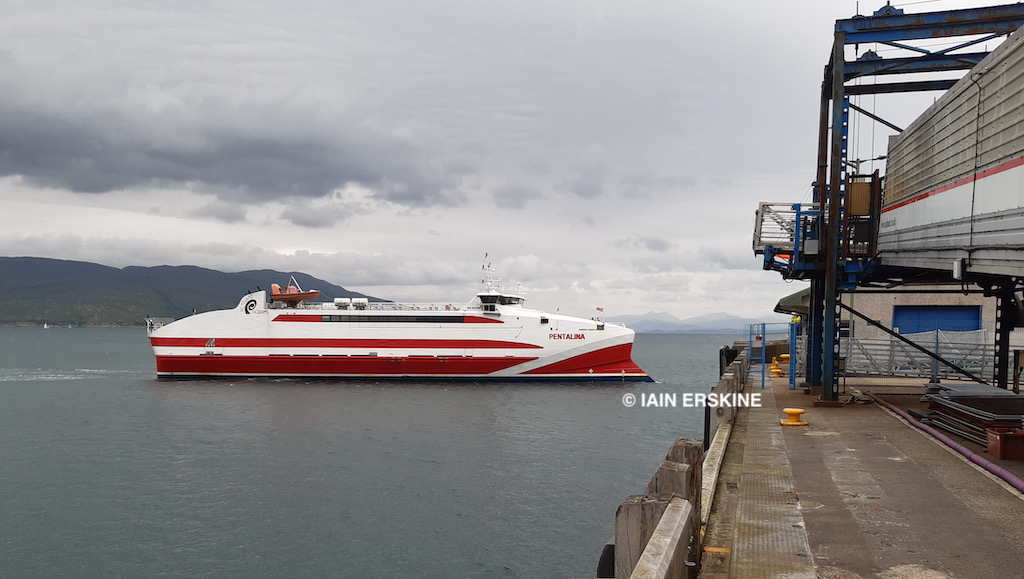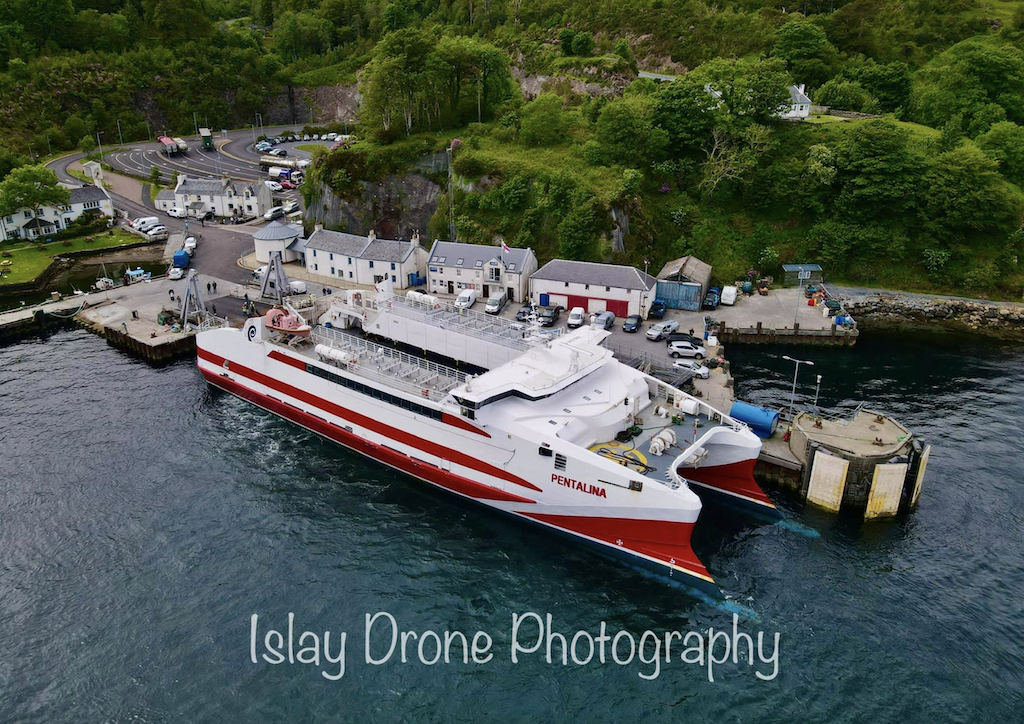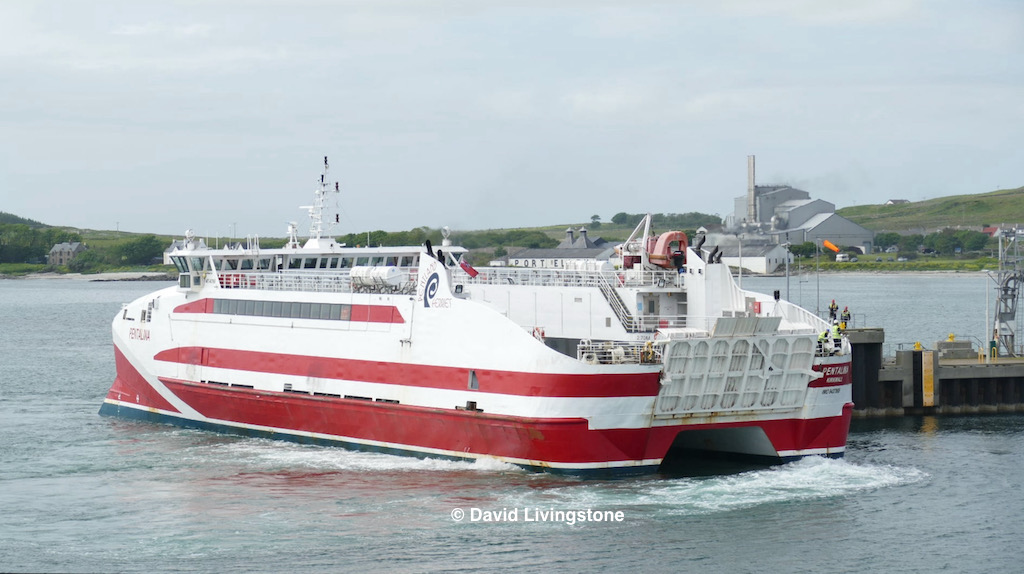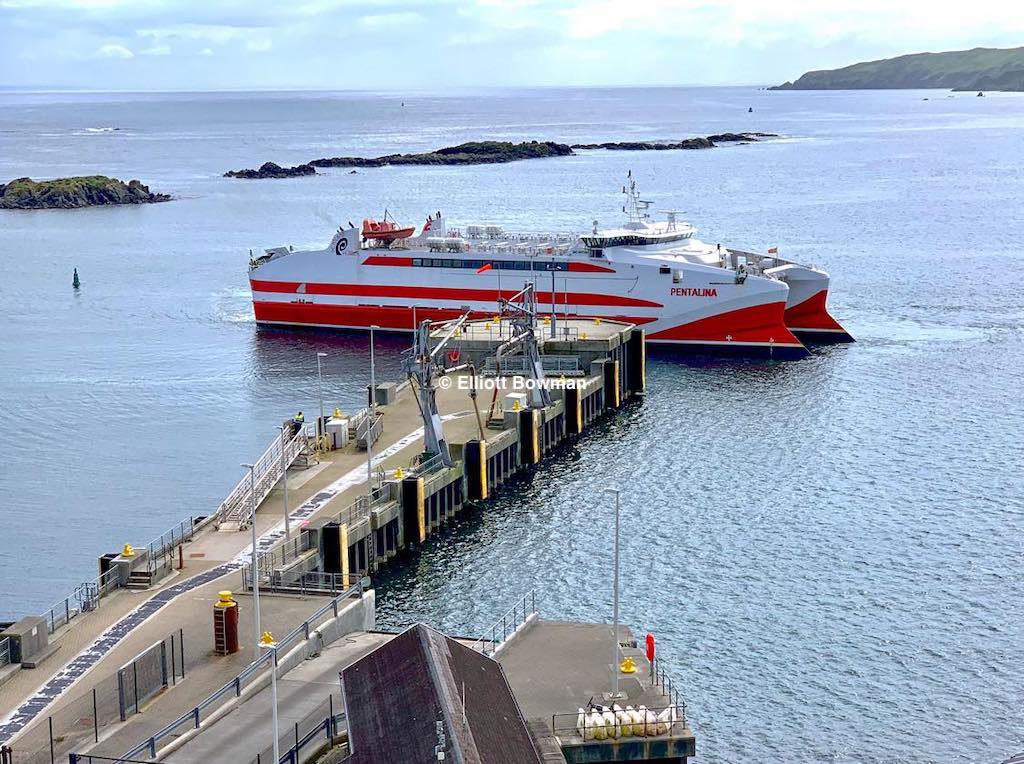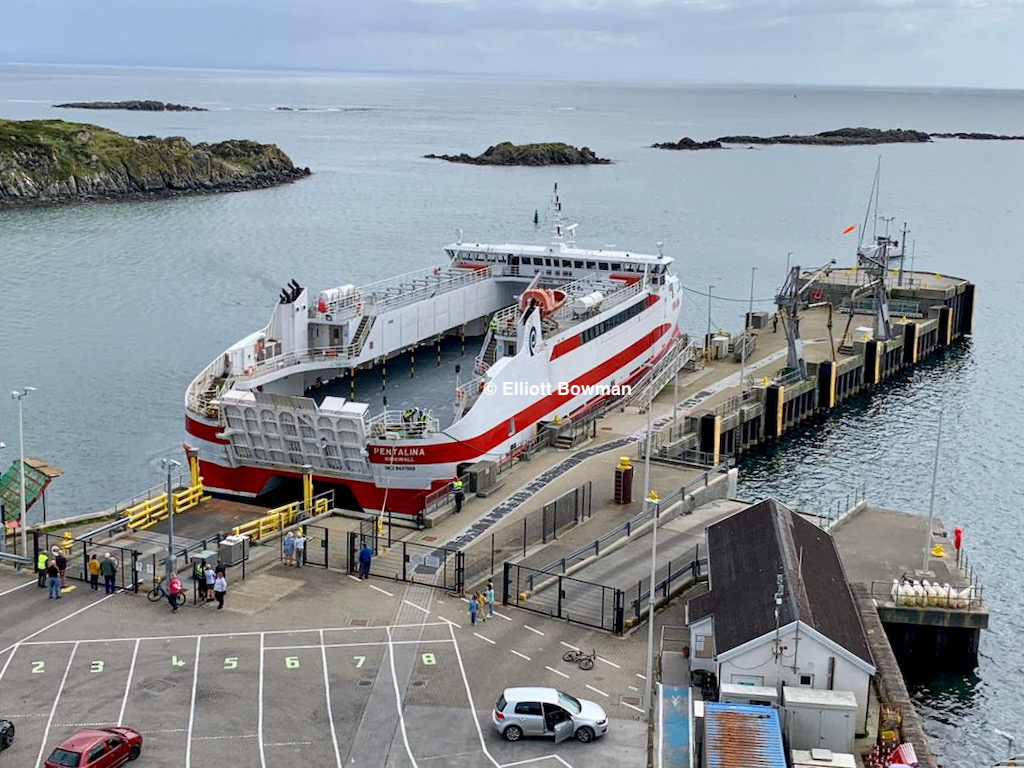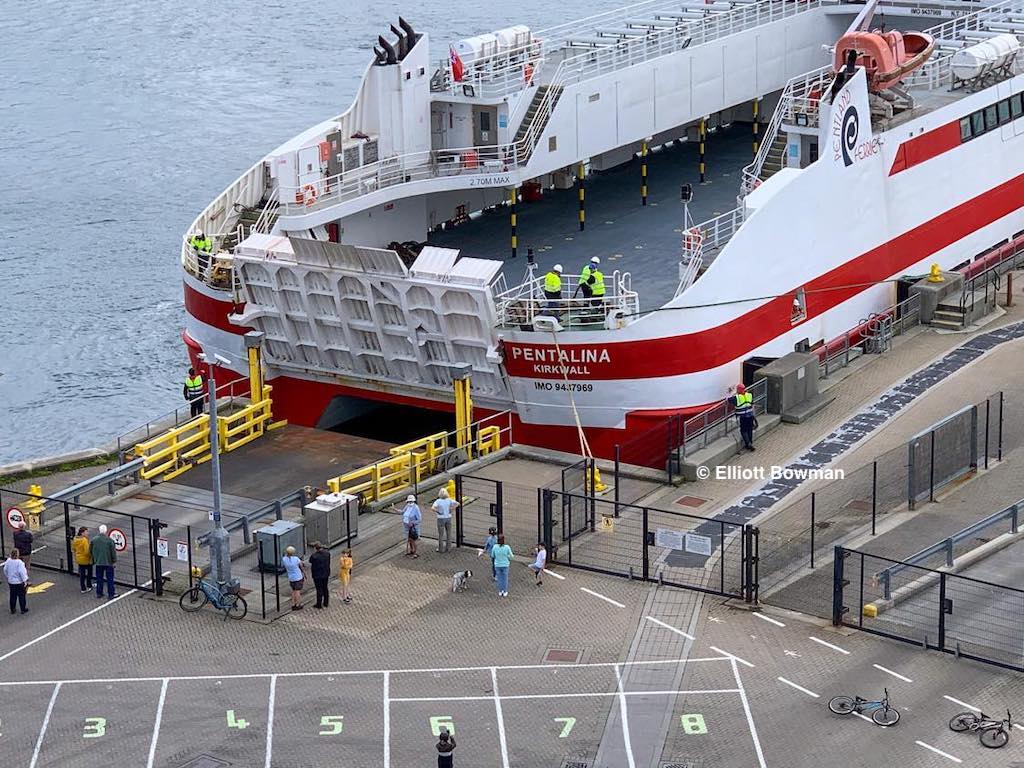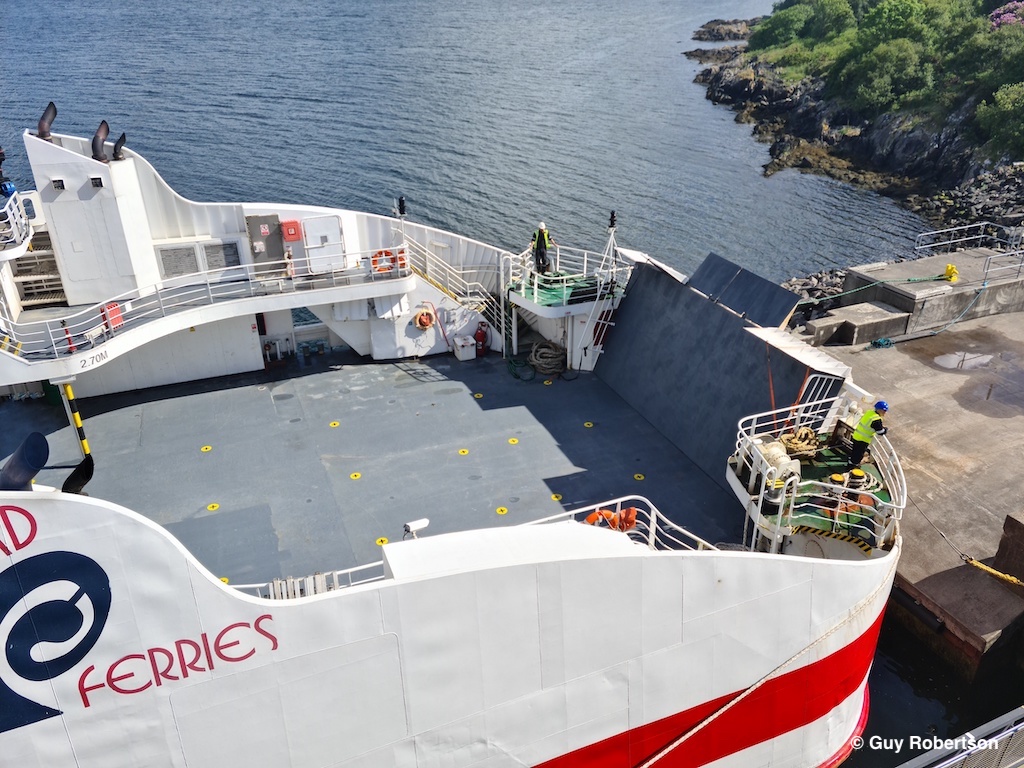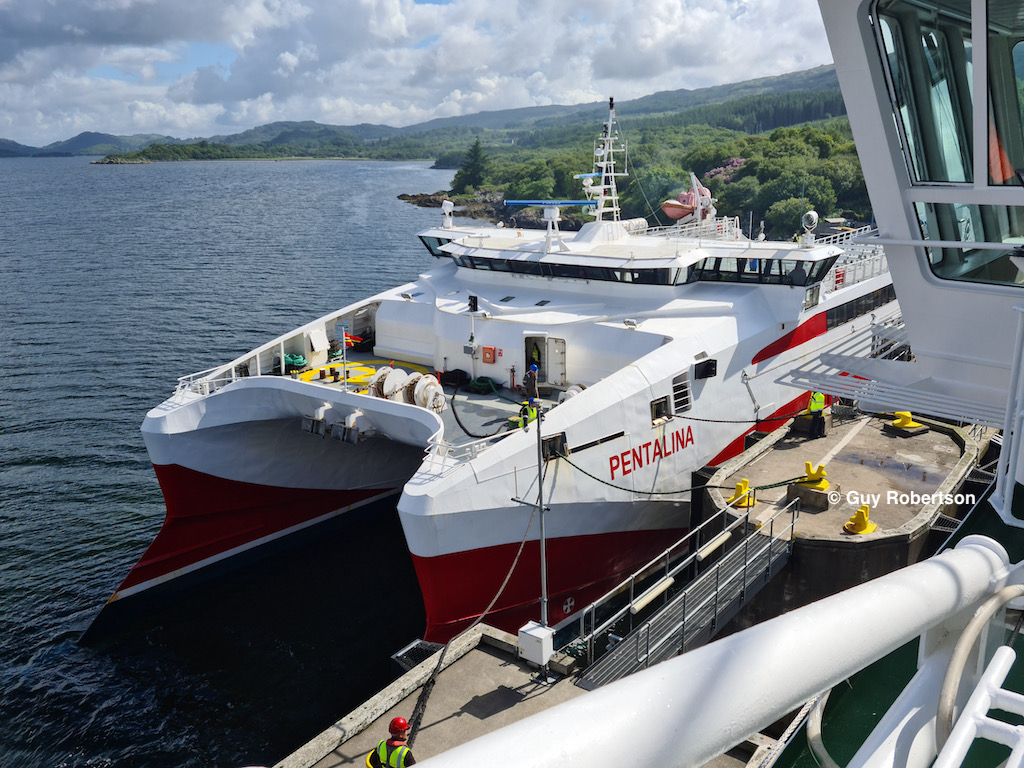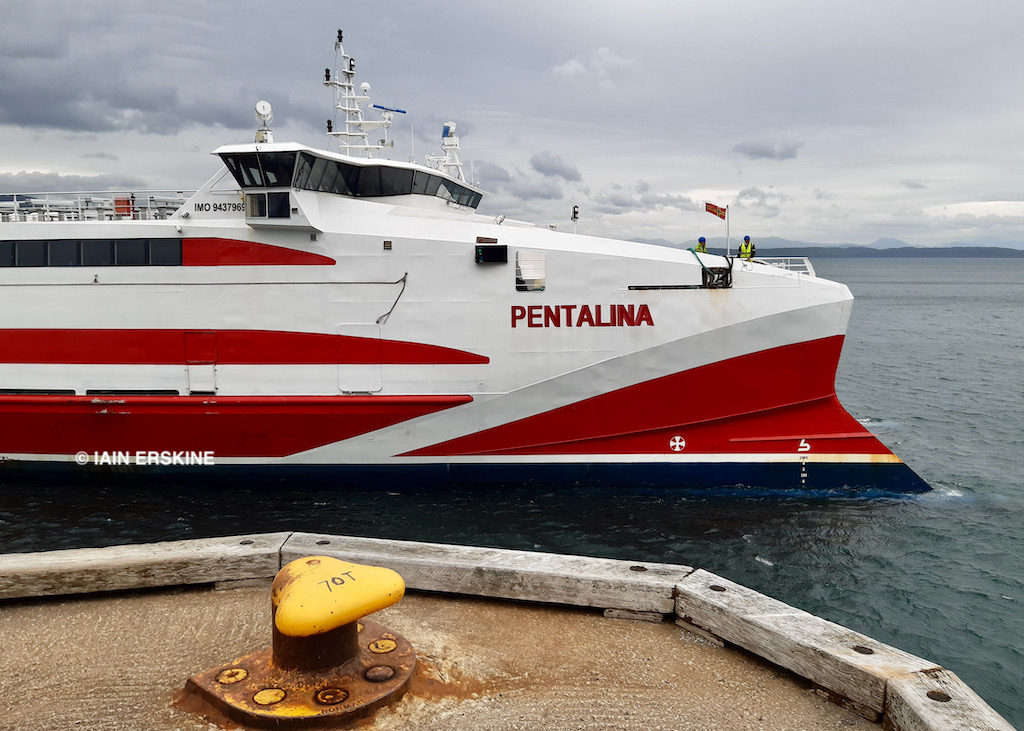
Hello, it’s me, and I may be back sooner than you think: Pentalina at Craignure on Tuesday 15 June. A CalMac document published by the Arran Ferry Committee said the catamaran ferry could be chartered for a small number of CalMac routes, including Arran and Mull, but that ‘wave restrictions may result in the vessel being subject to disruption’
The catamaran ferry Pentalina became the talk of Scotland’s ship enthusiast community this week, as a result of her foray into CalMac territory for berthing trials. Report by Andrew Clark.
Social media were abuzz with reports of the privately owned ferry’s progress up and down the west coast, even before she arrived at Campbeltown on Sunday 13 June.
The 13-year old vessel spent Monday and Tuesday sampling linkspans at Brodick, Ardrossan, Oban and Craignure. She continued trials on Wednesday at Colonsay, Islay piers and Kennacraig, before heading home to Kirkwall on Thursday. CalMac is understood to have wanted to trial her at as many ports as possible, to see where she fits, before beginning formal arrangements to charter her.
Pentalina is owned by Orkney-based Pentland Ferries and was replaced on their Pentland Firth crossing in November 2019.
There is speculation that she may start on a CalMac route as soon as early July — most likely on the Brodick-Ardrossan and Ardrossan-Campbeltown services. In recent months Arran residents have been particularly critical of the inadequacies of the island’s ferry services.
Pentalina’s west coast appearance was prompted by CalMac’s increasingly desperate search for suitable tonnage to make up for shortages in its own fleet. The state-owned Clyde and Hebridean ferry company has been struggling recently to maintain scheduled services, partly because of vessel breakdowns, and partly because of the demands of the summer timetable and long delays in the delivery of two new vessels ordered from Fergusons of Port Glasgow.
A CalMac presentation publicised on Monday by the Arran Ferry Committee said the Pentalina initiative had been instigated by Transport Scotland, the much criticised government quango, and that if she was chartered to CalMac, she would continue to be operated by her owners, Pentland Ferries.
It added that, in the event of CalMac ferry breakdowns, Pentalina could be redeployed to Oban-Craignure, releasing Isle of Mull to provide network relief where necessary.
‘As vessel is single ended, turnaround time will be 45 minutes in summer and 30 minutes in winter — may not be possible to deliver current timetables,’ the document said.
It also warned that ‘wave and wind restrictions may result in the vessel being subject to disruption’, an indication of what many observers regard as CalMac’s long-held suspicion of catamaran ferries and their ability to maintain services in the face of turbulent Hebridean waters.
The principal benefits of chartering Pentalina, it said, were ‘enhanced resilience within the network [and] enhanced summer capacity to support Covid recovery’.
Other benefits would include ‘to enable community aspirations to be delivered’ — management-speak for reducing the volume of islanders’ complaints in the media.
In what was described as an ‘overview’ of Pentalina, the document listed:
● single ended vessel
● wave height restriction of 4m max
● wind restriction of 40 knots max
● broadly equivalent capacity to MVs Isle of Arran and Isle of Mull.
Pentland Ferries would be responsible for all health and safety, as well as maintenance.
Pentalina was ordered by Orkney-based Pentland Ferries from a shipyard in Cebu in the Philippines in 2007 and arrived at St Margaret’s Hope in December 2008. She has been out of service since November 2019, after being made redundant by Alfred, a new Pentland Ferries vessel.
Special thanks to Walter Bowie, Elliott Bowman, Annie Branson, Bill Calderwood, Andrew Crawford, Iain Erskine, David Livingstone, Justin Maciver, Neil Ross Moodie, Guy Robertson and Islay Drone Photography for allowing their photographs to be included here. All images on the CRSC website are protected by copyright law. Do not reproduce them on Facebook, Pinterest or any other public platform.
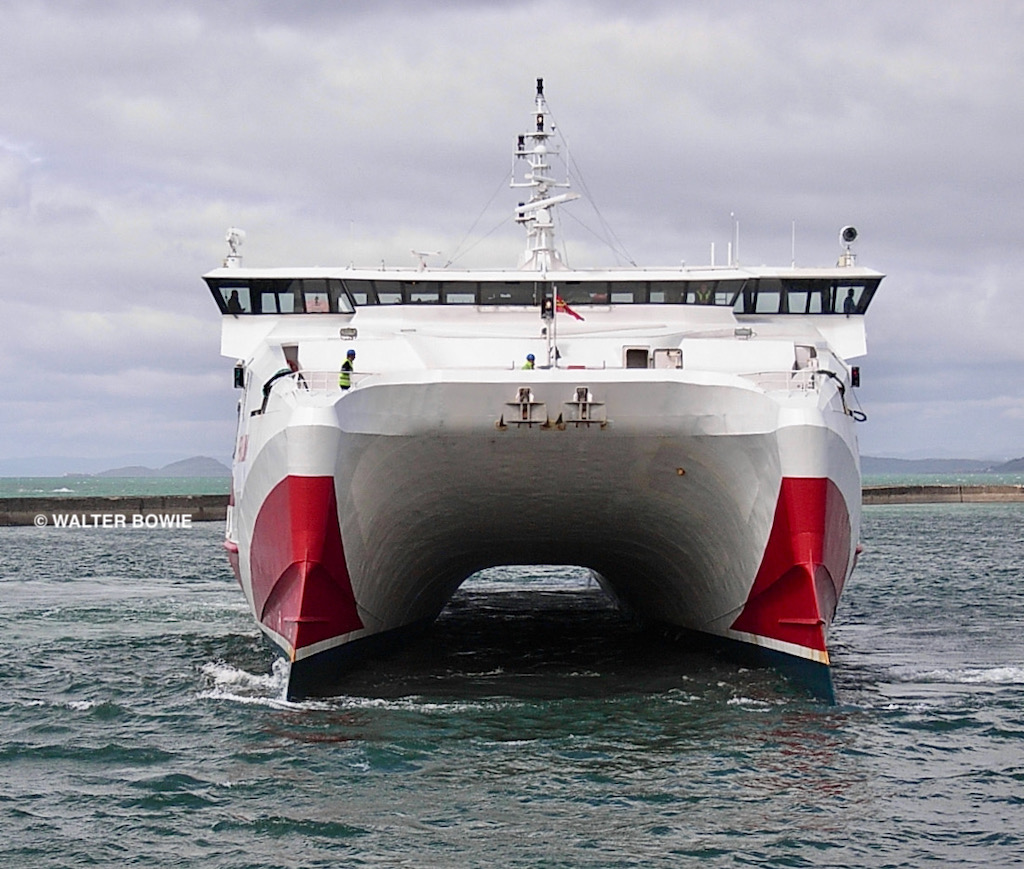
Pentalina at Ardrossan on Monday 14 June: is a catamaran ferry suitable for west of Scotland service? The debate continues
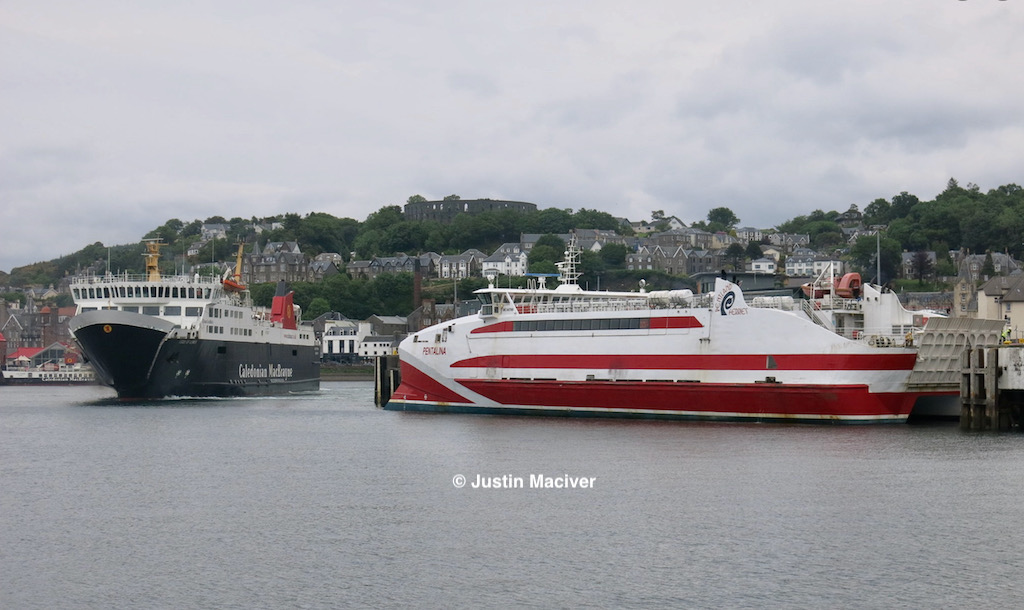
On Tuesday 15 June it was Oban’s turn to welcome Pentalina — just as Isle of Lewis was departing for Barra
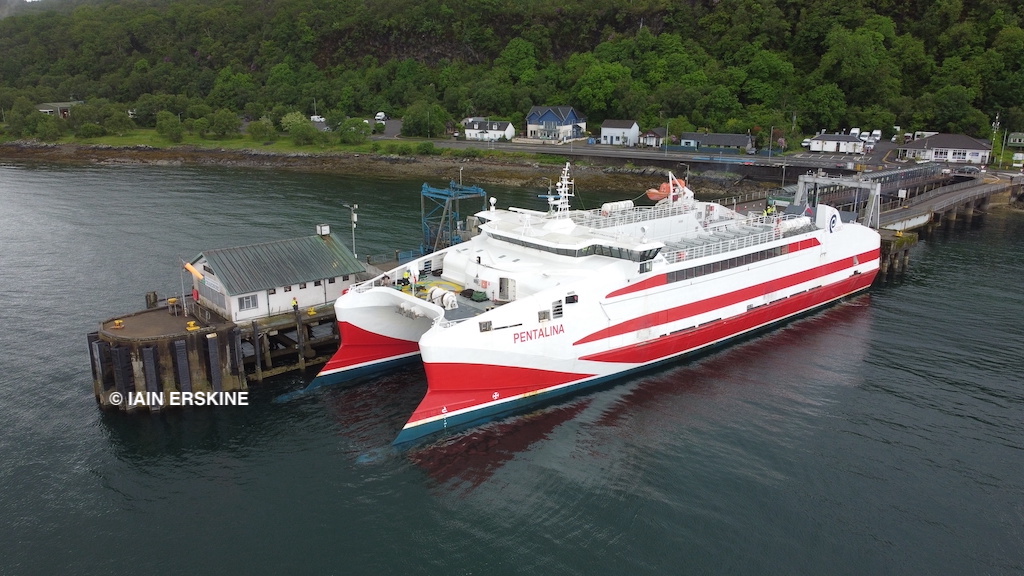
Pentalina at Craignure on the morning of Wednesday 16 June 2021, before she set off for Colonsay. As a single-ender she has longer turnaround times than CalMac’s fleet of drive-through car ferries
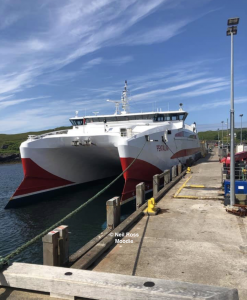
The Colonsay stop just before lunchtime on 16 June (click on image to enlarge) was brief and to the point…
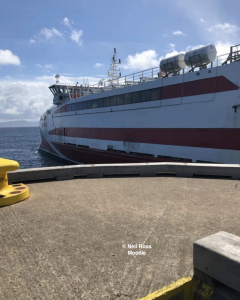
…but it was enough to arouse the curiosity of the islanders, who took a good look at their unexpected visitor
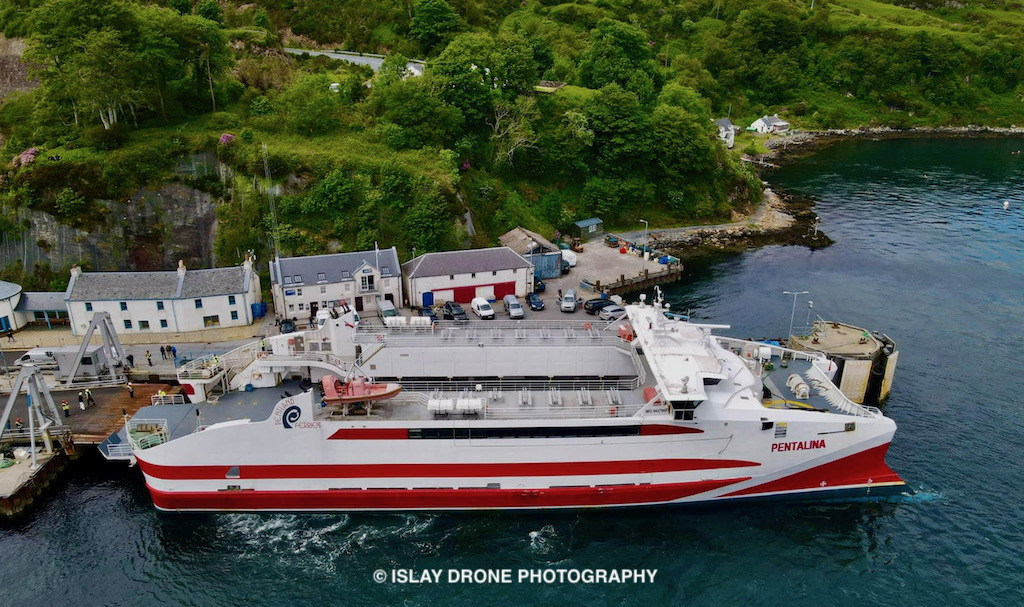
After Colonsay, Pentalina headed for Port Askaig in the early afternoon of 16 June to try out the berth there
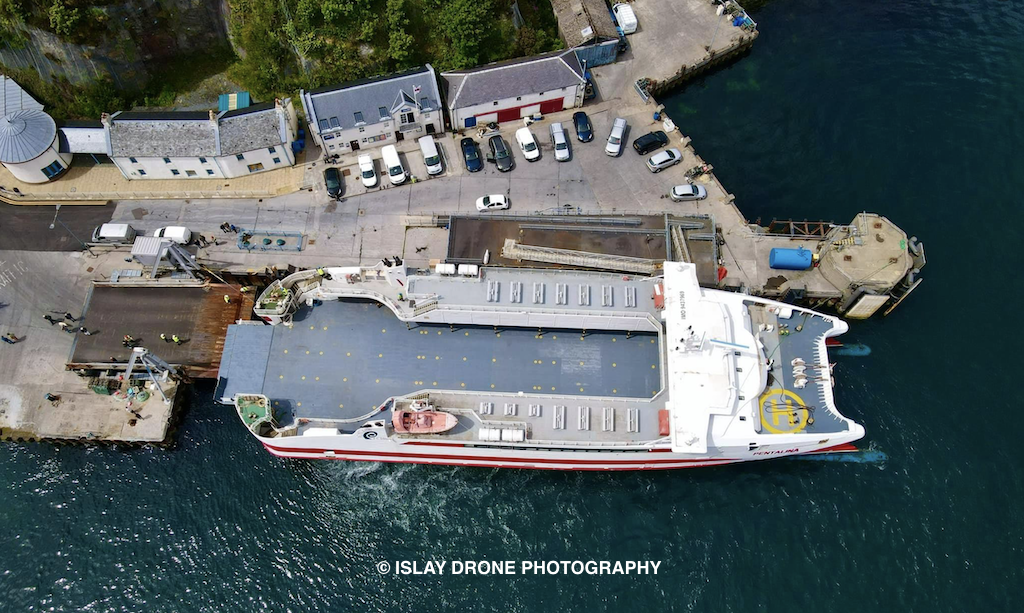
This drone shot at Port Askaig gives an excellent overhead impression of her car deck and outdoor passenger accommodation, but the alignment of ramp and linkspan leaves something to be desired
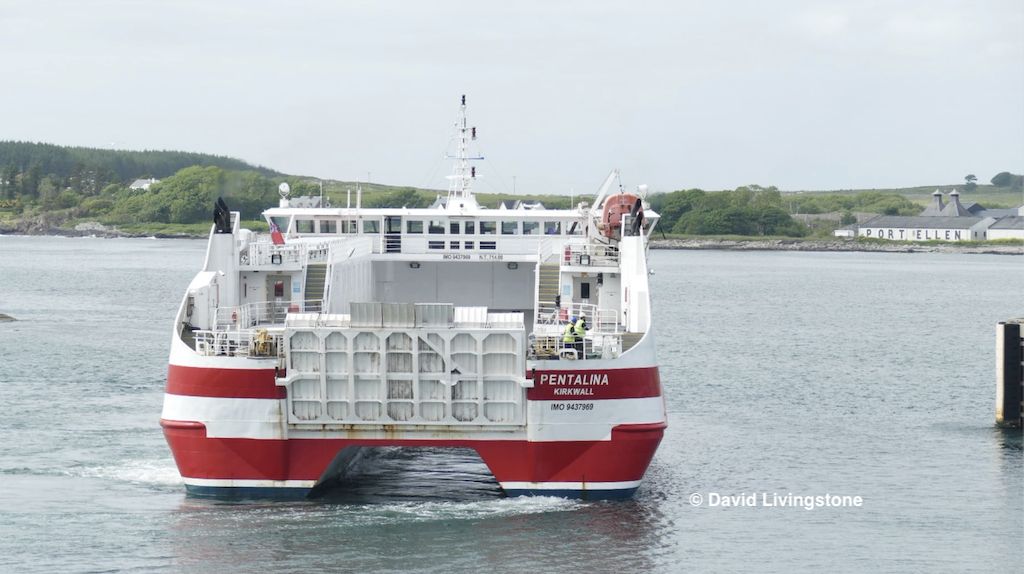
Arrival at Port Ellen on the afternoon of 16 June: Pentalina was blessed with calm conditions for her tour of the west coast
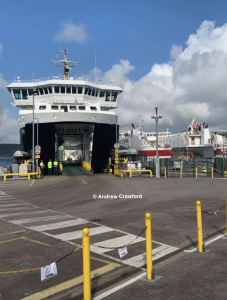
Nice to see a red hull back at Kennacraig, where the west coast ro-ro revolution started in 1967: Pentalina (right) sits next to Finlaggan (left) on the morning of Thursday 17 June
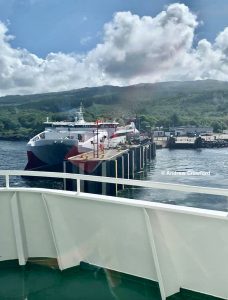
Pentalina basks in the sun at Kennacraig on 17 June as Finlaggan eases out of her berth at the start of her voyage down West Loch Tarbert and across to Islay. Click on image to enlarge
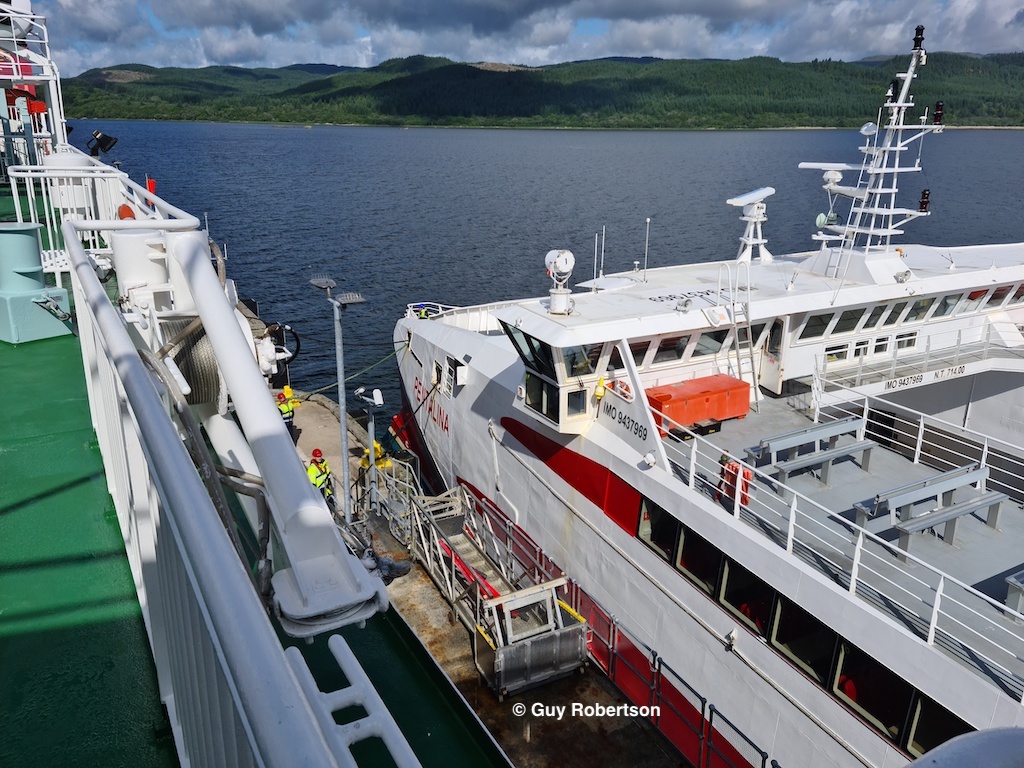
CRSC is grateful to Captain Guy Robertson, master of Finlaggan since her 2011 inception, for the following dramatic sequence of five photographs showing Pentalina at Kennacraig on Thursday 17 June, as Finlaggan set off for Islay
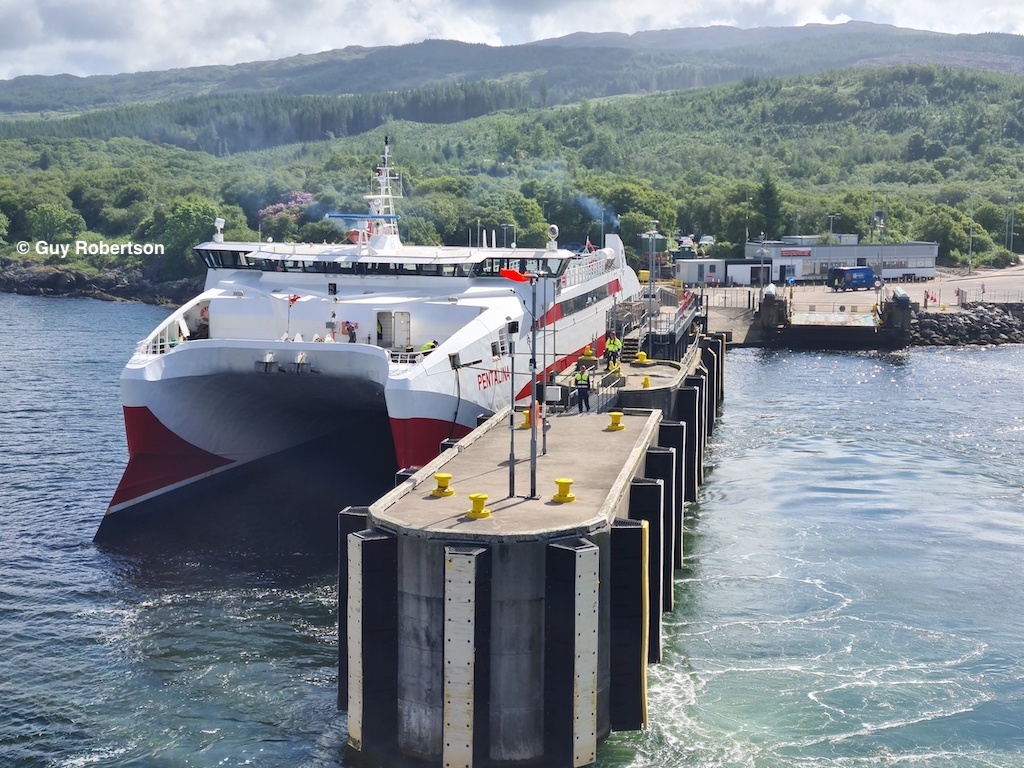
As Finlaggan pulls away, Pentalina is left quietly smoking, before following the CalMac vessel down the loch to open sea
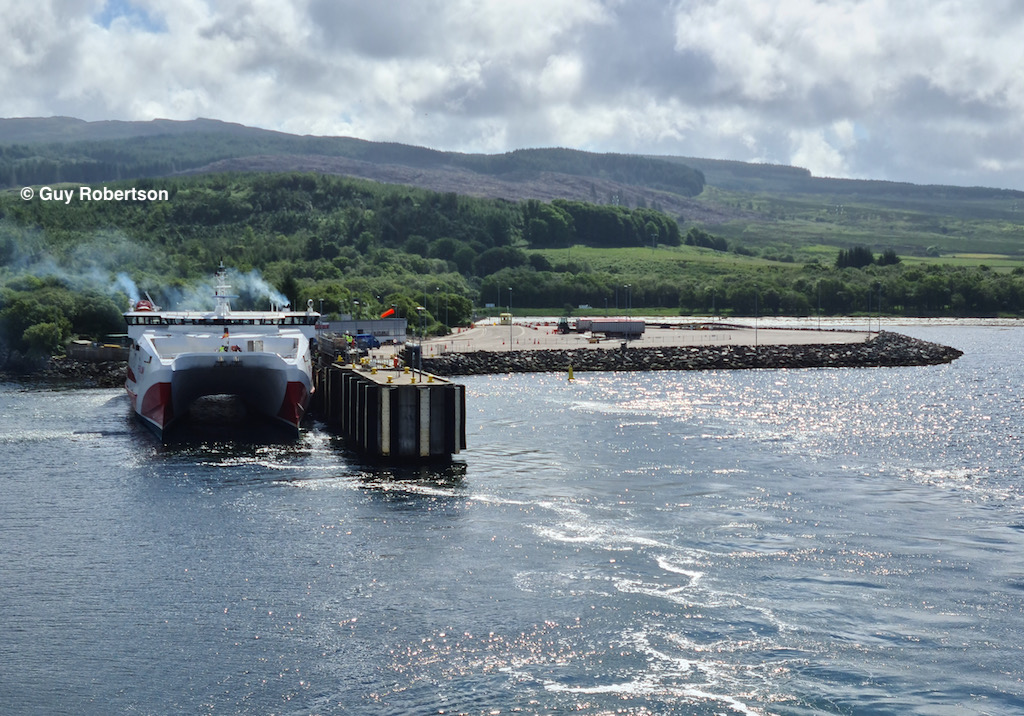
Will Pentalina be back? In the aftermath of her west coast visit, the consensus was that, while she might fit Ardrossan-Brodick and Oban-Craignure, she would not be suitable for Islay. Kennacraig Ferry Terminal steals the limelight in this photograph
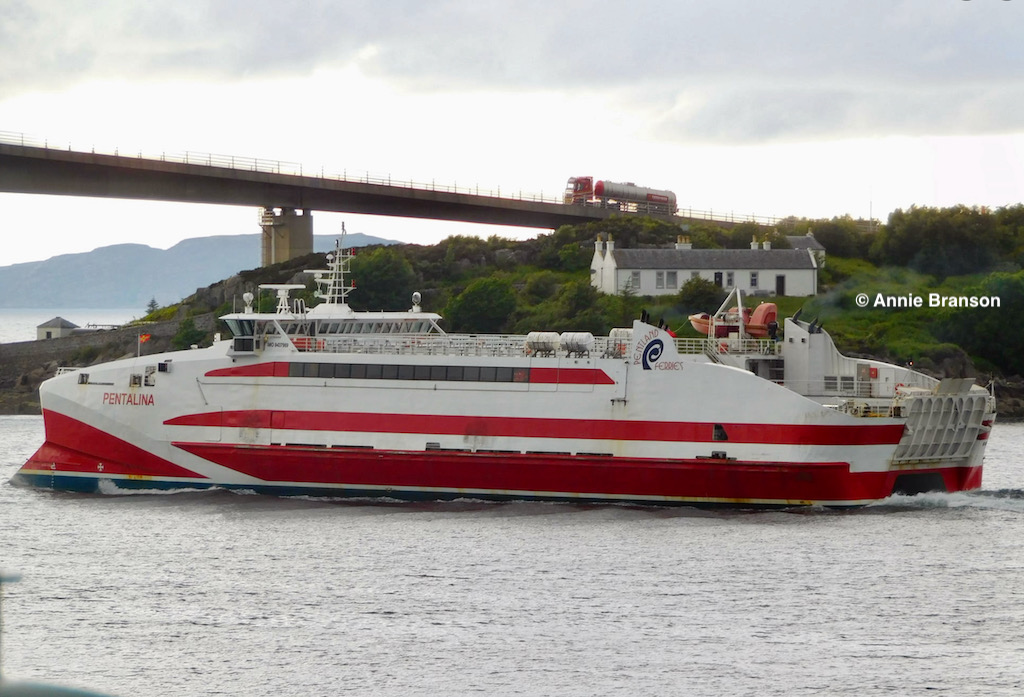
Mission accomplished: Pentalina sails beneath the Skye Bridge on the evening of Thursday 17 June on her voyage back to Orkney , which she reached the following morning
Join CRSC here and get all the benefits.
Published on 15-16-17-18 June 2021
